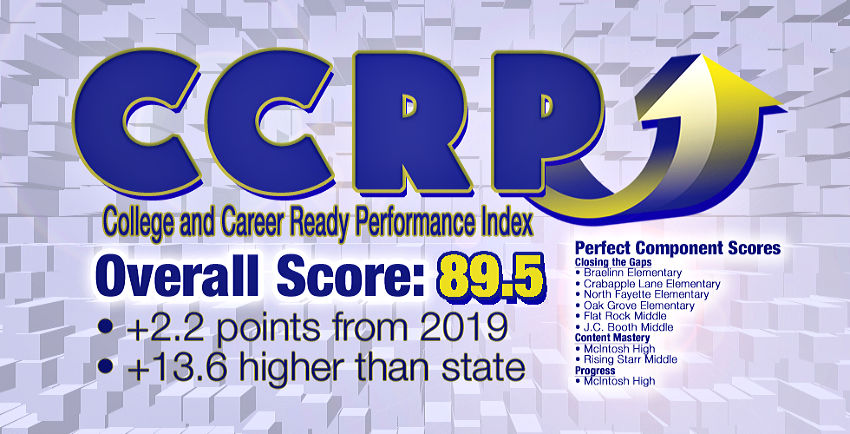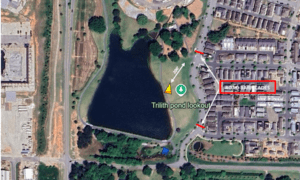While the state saw an overall drop in the 2019 College and Career Ready Performance Index (CCRPI), Fayette’s overall score increased.
The school system’s overall score is 89.5, up 2.2 points from last year. It is also 13.6 points higher the state’s score of 75.9.
Scores for each school level are in the upper 80s to mid 90s and track between 11 to 23 points above those of the state. Fayette’s CCRPI scores: 87.9, elementary; 94.8, middle; and 87.7, high. In comparison, state scores are 77.1, elementary; 72.1, middle; and 77.0, high.
Both Fayette’s middle and elementary schools raised their overall score this year. The middle school level had a significant increase, up 9.3 points from last year while the elementary school level score is up by 3.1 points. Although the state scores showed an increase at the high school level, Fayette’s high school score dropped 3.7 points.
CCRPI scores are based on five separate components – Content Mastery, Progress, Closing Gaps, Readiness and, for high schools, Graduation Rate. The CCRPI score is based on a 100-point scale.
Some Fayette County schools earned prefect scores on three of the five components.
More Fayette County schools scored 100 on the Closing the Gaps component, increasing from one to six. Schools that earned a perfect score are Braelinn Elementary, Crabapple Lane Elementary, North Fayette Elementary, Oak Grove Elementary, Flat Rock Middle, and J.C. Booth Middle.
Last year, McIntosh High earned a 100 in Content Mastery and in Progress, and has done so again. Rising Starr Middle joins McIntosh this year in achieving a perfect score in Content Mastery.
Content Mastery includes achievement scores in English, language arts, mathematics, science, and social studies based on student performance on state assessments. Progress utilizes Student Growth Percentiles to measure progress in both English language arts and mathematics showing the amount of growth a student has demonstrated relative to academically-similar students. Closing Gaps measures the extent to which all student subgroups are meeting annual achievement improvement targets.













Leave a Comment
You must be logged in to post a comment.